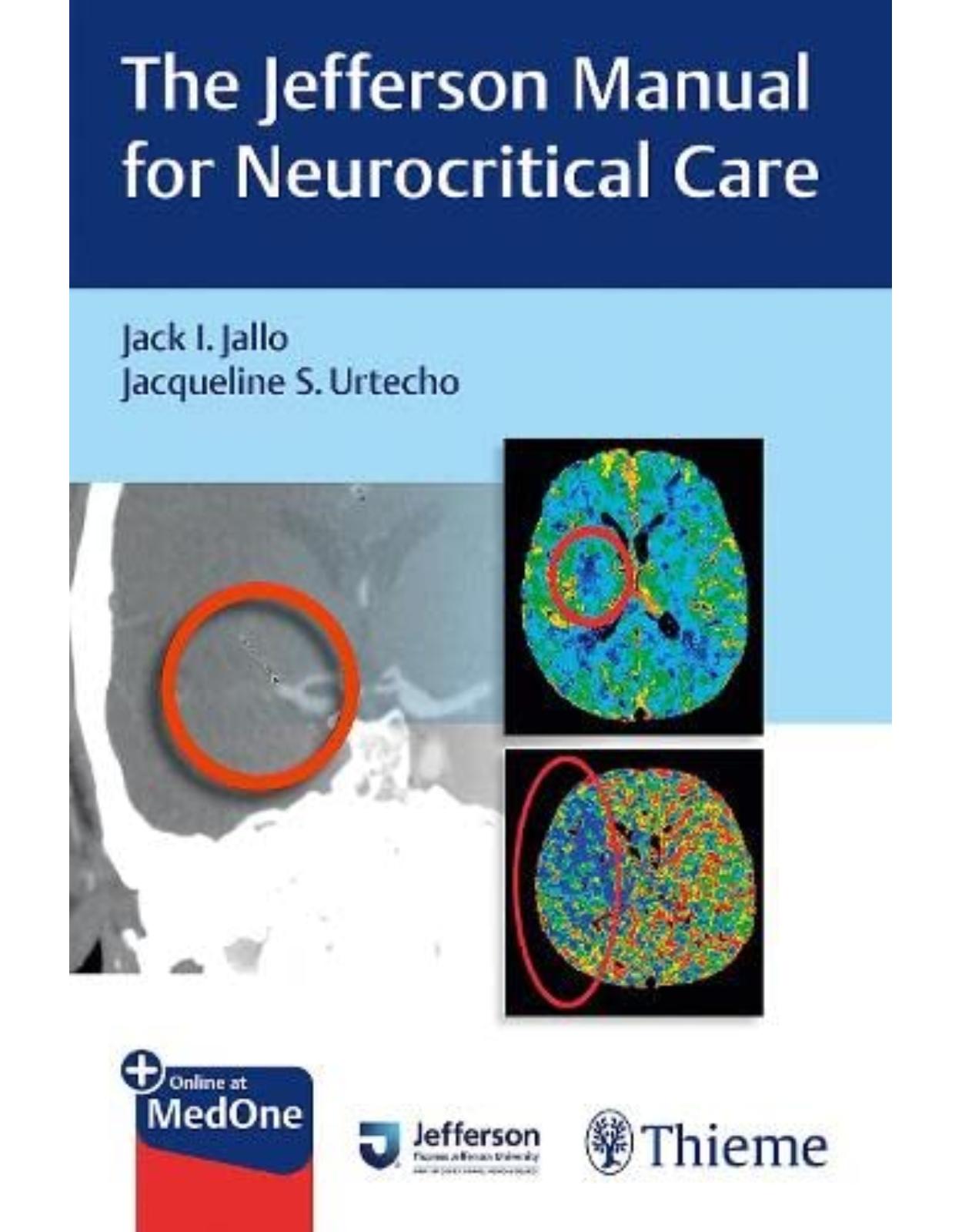
The Jefferson Manual for Neurocritical Care
Livrare gratis la comenzi peste 500 RON. Pentru celelalte comenzi livrarea este 20 RON.
Disponibilitate: La comanda in aproximativ 4 saptamani
Editura: Thieme
Limba: Engleza
Nr. pagini: 326
Coperta: Paperback
Dimensiuni: 20.32 x 12.7 cm
An aparitie: 2021
Description:
The quintessential reference for bedside medical management of neurocritical care patients
Medical management of patients in the neurocritical care unit (NCCU) often spells the difference between life or death and return to normal function or a lifetime disability. As such, it is vital that patients with life-threatening neurological and neurosurgical illnesses receive prompt diagnosis and rapid interventions in the NCCU.
The Jefferson Manual for Neurocritical Care by renowned neurosurgeon Jack I. Jallo, neurointensive care physician Jacqueline S. Urtecho, and distinguished colleagues is a high-yield pocket resource ideal for the bedside care of patients with serious, life-altering diseases. Nineteen concise chapters encompass cerebrovascular, neuromuscular, oncologic, and traumatic conditions, as well as core clinical topics applicable to the care of neurocritical patients.
This book includes complimentary access to a digital copy on https://medone.thieme.com.
Key Highlights:
Evidence-based management strategies created at Thomas Jefferson University's Vickie and Jack Farber Institute for Neuroscience presented in reader-friendly algorithms, pictures, and charts
General chapters cover brain death, sodium dysregulation, nutrition, sedation, pain management, neuromonitoring, and ventilation strategies
Disease-specific chapters featuring succinct, bulleted format include epidemiology, causes, diagnostic tests, treatment options, symptoms, common clinical presentation, risk factors, differential diagnoses, and more
This manual is an indispensable resource for neurocritical care residents and fellows, NCCU nurses, nurse practitioners, physician assistants, general intensive care physicians, and neurointensivists.
Table of Contents:
1. Encephalopathy and Delirium
1.1 Encephalopathy
1.1.1 Definition
1.1.2 Causes of Encephalopathy
1.1.3 Diagnosis of Encephalopathy
1.1.4 Treatment of Encephalopathy
1.1.5 Relationship to Delirium
1.2 Delirium
1.2.1 Definition
1.2.2 Duration of Symptoms
1.2.3 Level of Activity
1.2.4 Risk Factors for Delirium
1.2.5 Clinical Assessment
1.3 Treatment
1.3.1 Medications for Agitation
1.3.2 Pharmacologic Management of Hyperactive Delirium and Agitation
1.3.3 Nonpharmacologic Treatments for Delirium
2. Cerebrovascular Emergency: Acute Stroke Diagnosis and Management
2.1 Epidemiology
2.2 Etiology
2.2.1 Nonmodifiable Risk Factors
2.2.2 Modifiable Risk Factors
2.2.3 Stroke Subtypes
2.3 Common Clinical Presentations
2.4 Differential Diagnosis for Acute Ischemic Stroke
2.5 Acute Stroke Diagnosis, Treatment, and Management
2.5.1 Stroke Activation
2.6 Criteria for Endovascular Therapy
2.6.1 Neurocritical Care Management of Ischemic Stroke
2.7 Stroke Workup and Management
2.7.1 Post Stroke Complication
3. Cerebrovascular Emergency: Spontaneous Intracerebral Hemorrhage (ICH)
3.1 Epidemiology
3.2 Etiologies/Differential Diagnosis
3.3 Common Clinical Presentations
3.4 Neuroimaging
3.5 Treatment
3.5.1 Aggressive Reduction in SBP to Goal of 140
3.5.2 Seizures
3.5.3 Intracranial Pressure
3.5.4 Medical Issues
3.5.5 Coagulopathies
3.5.6 Surgical Options
3.5.7 Craniotomy
3.5.8 Craniectomy
3.5.9 Minimally Invasive Surgical Evacuation
3.6 Prognosis
4. Cerebrovascular Emergencies: Aneurysmal Subarachnoid Hemorrhage (SAH)
4.1 Epidemiology
4.2 Risk Factors
4.3 Diagnosis
4.4 Grading System
4.4.1 Hunt and Hess Grade
4.4.2 World Federation of Neurological Surgeons Grade
4.4.3 Modified Fischer Scores
4.5 Management of Subarachnoid Hemorrhage
4.5.1 Early Phase
4.5.2 Late Phase
4.6 Vasospasm, Delayed Neurologic Deterioration (DND), and Delayed Cerebral Ischemia (DCI)
4.6.1 Detection and Management of Vasospasm and DCI
4.7 Hyponatremia and Endocrine Dysfunction
4.7.1 Hyponatremia
4.7.2 Endocrine Dysfunction
5. Transfusion Medicine and Anticoagulation
5.1 Introduction
5.2 Anemia in the ICU
5.3 Red Cell Transfusion
5.3.1 Leukocyte Reduction Indications
5.3.2 Washed RBC
5.3.3 Irradiation
5.3.4 Complications of Red Blood Cell Transfusion
5.3.5 Benefits to Transfusion
5.4 Hemoglobin “Triggers”
5.5 Thrombocytopenia
5.6 Prophylaxis Thresholds
5.6.1 Treatment of Bleeding
5.7 Antiplatelet Reversal in Intracranial Hemorrhage
5.8 Coagulation Cascade and Anticoagulants
5.9 Anticoagulants
5.9.1 Warfarin
5.10 Oral Factor Xa Inhibitors
5.10.1 Apixaban, Rivaroxaban, Edoxaban
5.11 Thrombin Inhibitors
5.11.1 Oral
5.11.2 Intravenous
5.12 The Heparins
5.12.1 Unfractionated Heparin
5.12.2 Low-Molecular-Weight Heparin (LMWH)
5.12.3 Fondaparinux
5.13 Deep Vein Thrombosis (DVT) Prophylaxis
6. Cerebral Edema and Elevated Intracranial Pressure
6.1 The Basics
6.1.1 Monro-Kellie Doctrine
6.1.2 ICP and Cerebral Perfusion Pressure (CPP)
6.1.3 Intracranial Compliance
6.1.4 ICP Waveforms and Herniation Syndromes
6.2 Cerebral Edema
6.3 Stepwise Approach to the Management of Elevated ICP
6.4 Management of Increased Intracranial Pressure
6.4.1 Tier 1
6.4.2 Tier 2
6.4.3 Tier 3
7. Fevers and Infections in the Neuro-ICU
7.1 Brain
7.1.1 Meningitis
7.1.2 Acute Bacterial Meningitis
7.1.3 Aseptic Meningitis
7.1.4 Viral Meningitis
7.1.5 Fungal Meningitis
7.1.6 Ventriculitis
7.1.7 HIV-Related Infections
7.1.8 Empyema
7.2 Spine
7.2.1 Epidural Abscess
7.2.2 Osteomyelitis
7.3 Central Fever
8. Treatment of Status Epilepticus in Adults
8.1 Overview and Definitions
8.2 Convulsive Status Epilepticus Management
8.3 Nonconvulsive Status Epilepticus (NCSE)
8.4 Refractory Status Epilepticus (RSE)
8.5 Super Refractory Status Epilepticus (SRSE)
9. Trauma
9.1 Acute Spinal Cord Injury
9.1.1 Introduction
9.1.2 Medical Treatment of Acute SCI
9.1.3 Surgical Management of Acute SCI
9.2 Traumatic Brain Injury
9.2.1 Introduction
9.2.2 Management of Elevated ICP
9.2.3 Other Post-TBI Considerations
9.3 Paroxysmal Sympathetic Hyperactivity (PSH)
10. Neuromuscular and Other Neurologic Emergencies
10.1 Guillain-Barré Syndrome (GBS)/Acute Inflammatory Demyelinating Polyradiculoneuropathy (AIDP)
10.1.1 Definition
10.1.2 Epidemiology
10.1.3 Differential Diagnosis
10.1.4 Common Clinical Presentation
10.1.5 Diagnosis
10.1.6 GBS Variants
10.1.7 Ancillary Testing
10.1.8 Complications of GBS
10.1.9 Management
10.1.10 Prognosis
10.2 Myasthenia Gravis
10.2.1 Definition
10.2.2 Epidemiology
10.2.3 Differential Diagnosis
10.2.4 Clinical Presentation of Generalized Myasthenia Gravis
10.2.5 Diagnosis
10.2.6 Management of Myasthenic Crisis
10.2.7 Prognosis
10.3 Botulism
10.3.1 Definition
10.3.2 Epidemiology
10.3.3 Pathophysiology
10.3.4 Differential Diagnosis
10.3.5 Clinical Presentation
10.3.6 Diagnosis
10.3.7 Management
10.3.8 Prognosis
10.4 Organophosphate Toxicity
10.4.1 Definition
10.4.2 Epidemiology
10.4.3 Pathophysiology
10.4.4 Differential Diagnosis
10.4.5 Clinical Presentation
10.4.6 Diagnosis
10.4.7 Management
10.4.8 Prognosis
10.5 Neuroleptic Malignant Syndrome (NMS) and Serotonin Syndrome (SS)
10.5.1 Definition
10.5.2 Epidemiology
10.5.3 Pathogenesis
10.5.4 Differential Diagnosis
10.5.5 Clinical Presentation
10.5.6 Diagnosis
10.5.7 Management
10.5.8 Complications
10.5.9 Prognosis
11. Brain Tumor Postoperative Management
11.1 Introduction
11.1.1 Clinical Presentation
11.1.2 Tumor Classification
11.2 Postoperative Care and Complications
11.2.1 Airway Management
11.2.2 Blood Pressure Control and Postoperative Hemorrhage
11.2.3 Seizure Prophylaxis
11.2.4 Venous Thromboembolism Prophylaxis
11.2.5 Antibiotic Prophylaxis and Postoperative Infection
11.2.6 Cerebral Edema
11.2.7 CSF Leak
11.3 Specific Concerns for Sellar and Parasellar Tumors
11.3.1 Hormonal Dysregulation
11.3.2 Pituitary Apoplexy
11.4 Conclusion
12. Brain Death in Adults
12.1 Definition of Brain Death
12.2 Clinical Evaluation
12.2.1 Establishing the Proximate Cause of Coma
12.2.2 Clinical Examination to Establish Irreversibility
12.3 Ancillary Tests
12.4 Legal
12.5 Management of the Brain-Dead Patient for Organ Donation
13. Sodium Dysregulation
13.1 Terminology
13.2 Hyponatremia Classification
13.2.1 Causes of Hyponatremia
13.2.2 Symptomatic Hyponatremia
13.3 SIADH versus CSW
13.3.1 Syndrome of Inappropriate Antidiuretic Hormone Secretion (SIADH)
13.3.2 Cerebral Salt Wasting (CSW)
13.3.3 SIADH and CSW Diagnosis
13.4 Diagnostic Approach to Hyponatremia
13.4.1 Hyponatremia Treatment: General Principles
13.4.2 Acute Symptomatic Moderate to Severe Hyponatremia
13.4.3 Acute Asymptomatic Moderate Hyponatremia
13.4.4 Severe Chronic Mild-Moderate Hyponatremia
13.4.5 SIADH Treatment
13.4.6 CSW Treatment
13.4.7 Treatment of Hyponatremia in Patients with Subarachnoid Hemorrhage
13.4.8 Treatment of Hyponatremia in Patients with Heart Failure
13.5 Hypernatremia
13.5.1 Central (Neurogenic) Diabetes Insipidus
13.5.2 Nephrogenic Diabetes Insipidus
13.6 Diagnostic Approach to Hypernatremia
13.6.1 Treatment
13.6.2 Central DI Treatment
13.6.3 Nephrogenic DI Treatment
14. Nutrition
14.1 Glucose Utilization
14.2 Nutrition in Critical Care
14.3 Nutrition Status
14.3.1 Malnutrition
14.3.2 Refeeding Syndrome
14.3.3 Nutrition-Related Laboratory Tests
14.4 Nutrition Assessment
14.4.1 Calorie Needs
14.4.2 Protein Needs
14.4.3 Nutrition Support
14.4.4 Enteral Nutrition
14.5 Specific EN Considerations
14.5.1 Parenteral Nutrition
14.6 Therapy-Specific Considerations
14.7 Conclusion
15. Sedation
15.1 Introduction
15.2 Indications for Sedation
15.3 Complications of Sedation
15.4 Assessment of Sedation
15.5 Choice of Sedative
15.5.1 Propofol (Diprivan)
15.5.2 Midazolam (Versed)
15.5.3 Dexmedetomidine (Precedex)
15.5.4 Fentanyl (Sublimaze)
15.5.5 Ketamine (Ketalar)
16. Pain Management in the Neuro-Intensive Care Unit (ICU)
16.1 Introduction
16.2 Modern Strategy of Pain Management in ICU Liberation
16.3 Challenges of Pain Management in Neuro-ICU
16.4 Individualizing Therapy in NICU
16.4.1 Pharmacologic Interventions of Pain
16.4.2 Nonpharmacologic Approach
16.5 Neuro-specific Diseases at Risk for Pain
16.5.1 Pain with SAH
16.5.2 Spondylosis and Disk Herniation
16.5.3 Spasticity
16.6 Ongoing Continuous Pain Monitoring in NICU
16.6.1 Pain Scales
17. Advanced Hemodynamic and Neurological Monitoring in the Neuro-ICU
17.1 Hemodynamic Monitoring
17.1.1 Invasive Monitoring: Pulmonary Thermodilution
17.1.2 Less Invasive: Transpulmonary Thermodilution
17.1.3 Minimally Invasive Monitoring: Pulse Contour Analysis
17.1.4 Noninvasive Hemodynamic Monitoring
17.2 Neurological Monitoring
17.2.1 Noninvasive Monitors
17.2.2 Invasive Monitors: Cerebral Oximetry
17.2.3 Cerebral Blood Flow Monitors
17.2.4 Intracranial Pressure Monitoring
18. Neuroimaging
18.1 Introduction
18.2 Types of Imaging
18.2.1 Brain Imaging
18.2.2 Spine Imaging
18.3 Advantages and Limitations
18.3.1 Brain Imaging
18.3.2 Spine Imaging
18.3.3 Systemic
19. Ventilation Strategies in Neuro-ICU
19.1 Introduction
19.2 Respiratory Failure
19.2.1 Noninvasive Oxygenation and Ventilation
19.2.2 Invasive Mechanical Ventilation
19.2.3 Basic Principles of Mechanical Ventilation
19.2.4 Modes of Ventilation
19.2.5 Initial Ventilator Settings
19.2.6 For Pressure Ventilation
19.2.7 Common Ventilator Problems
19.2.8 Weaning from Ventilator
19.2.9 WHEANS NOT Mnemonic
19.2.10 Extubation Procedure
Index
Read Less
| An aparitie | 2021 |
| Autor | Jack I. Jallo, Jacqueline Urtecho |
| Dimensiuni | 20.32 x 12.7 cm |
| Editura | Thieme |
| Format | Paperback |
| ISBN | 9781626234949 |
| Limba | Engleza |
| Nr pag | 326 |
| Versiune digitala | DA |

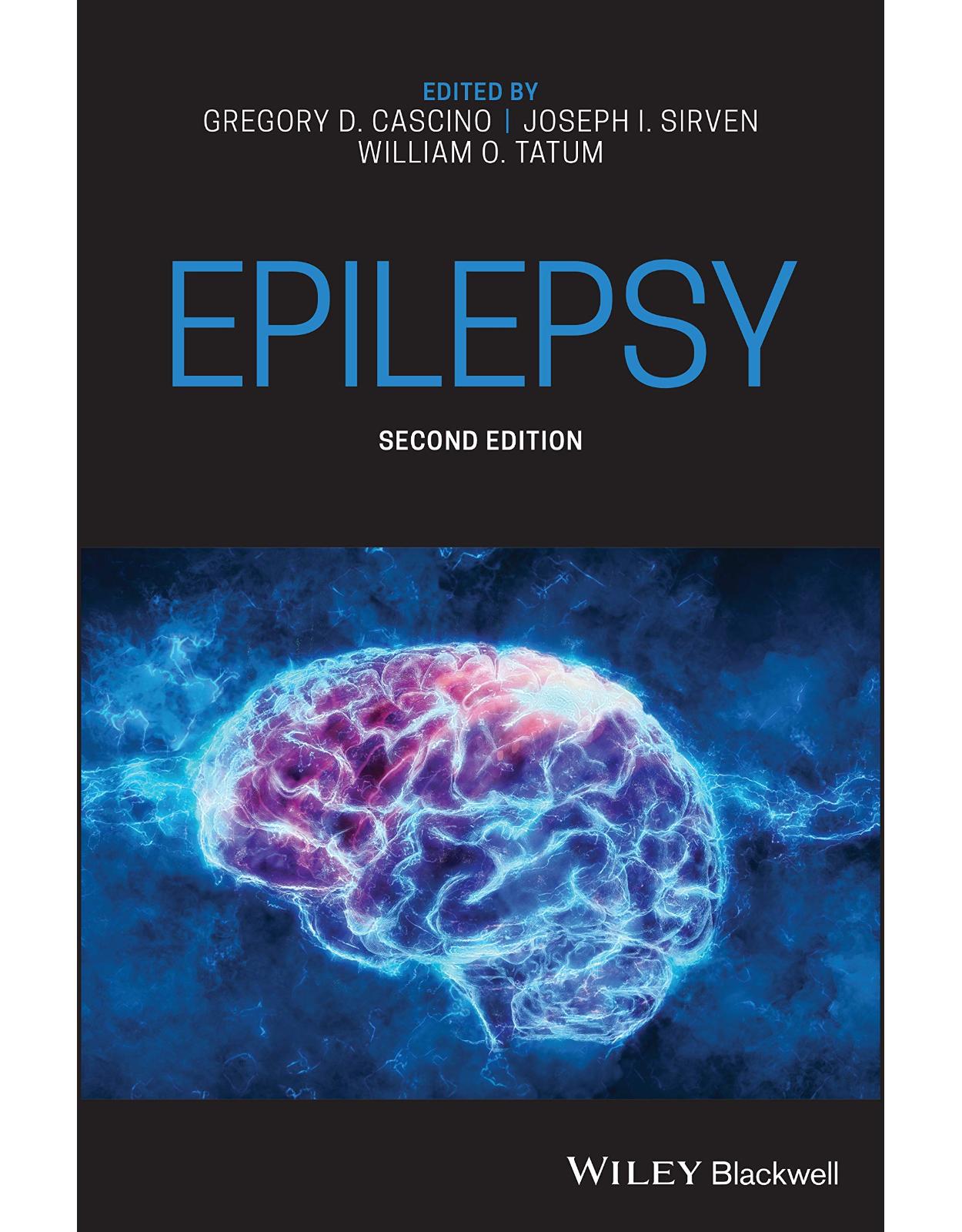
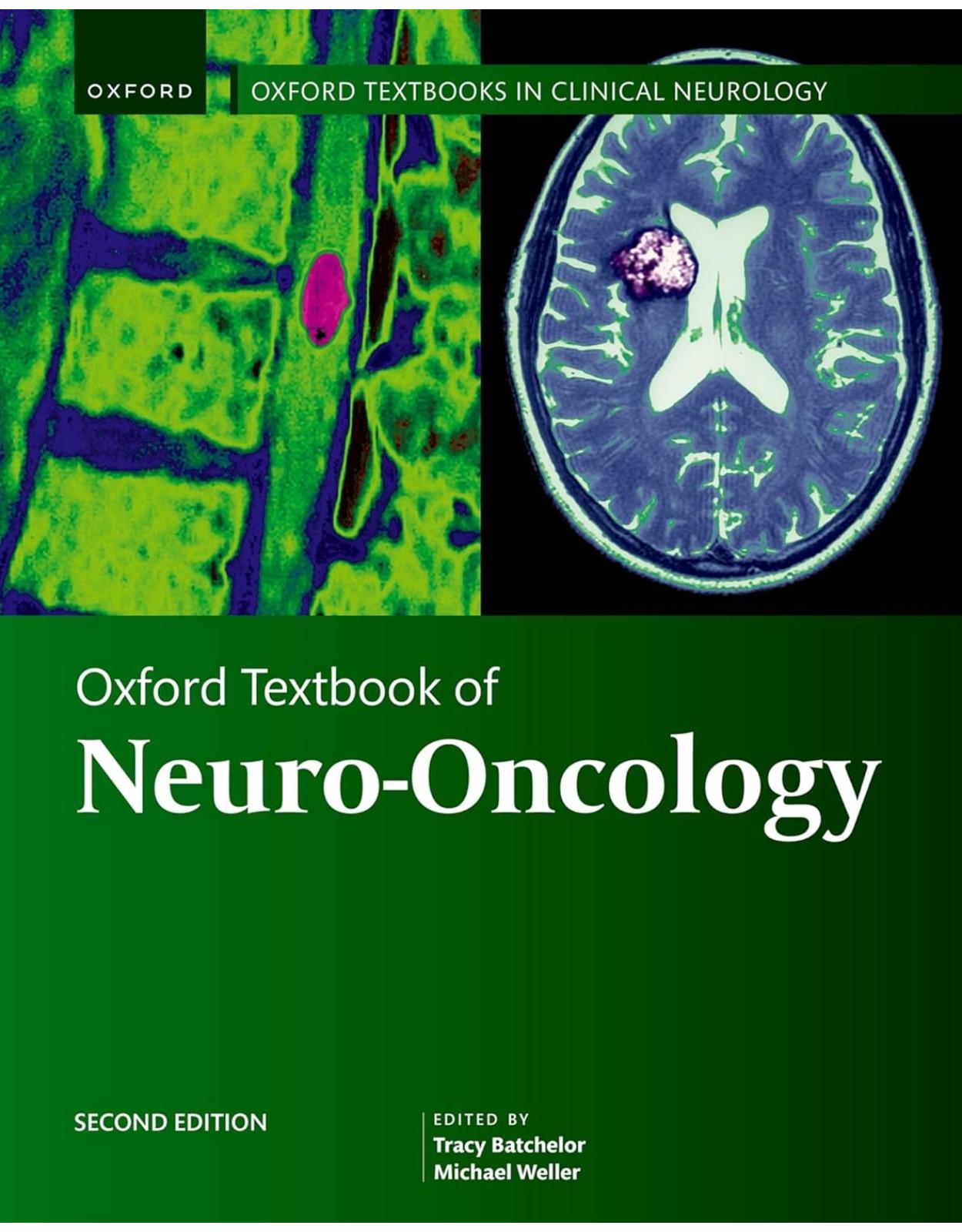
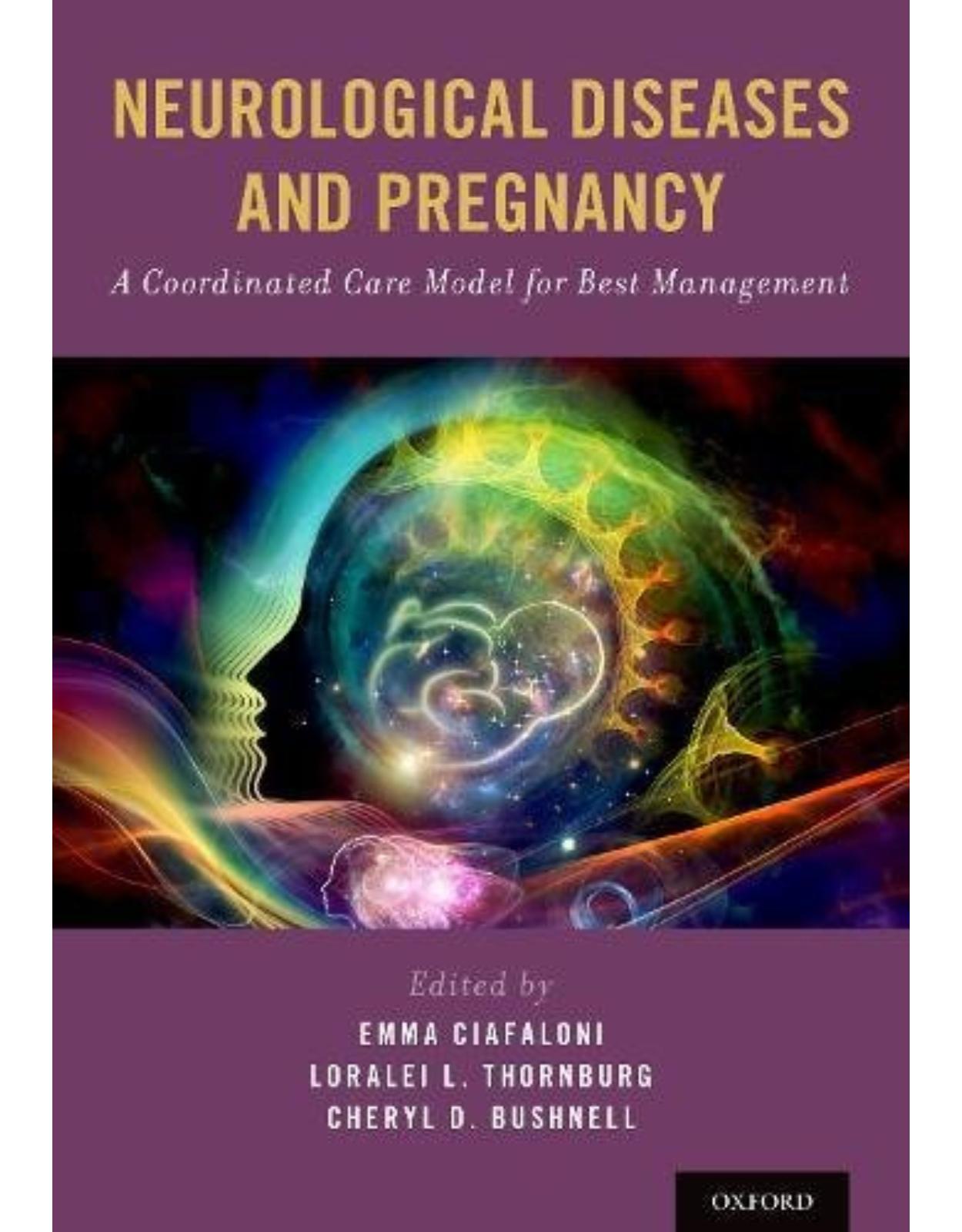
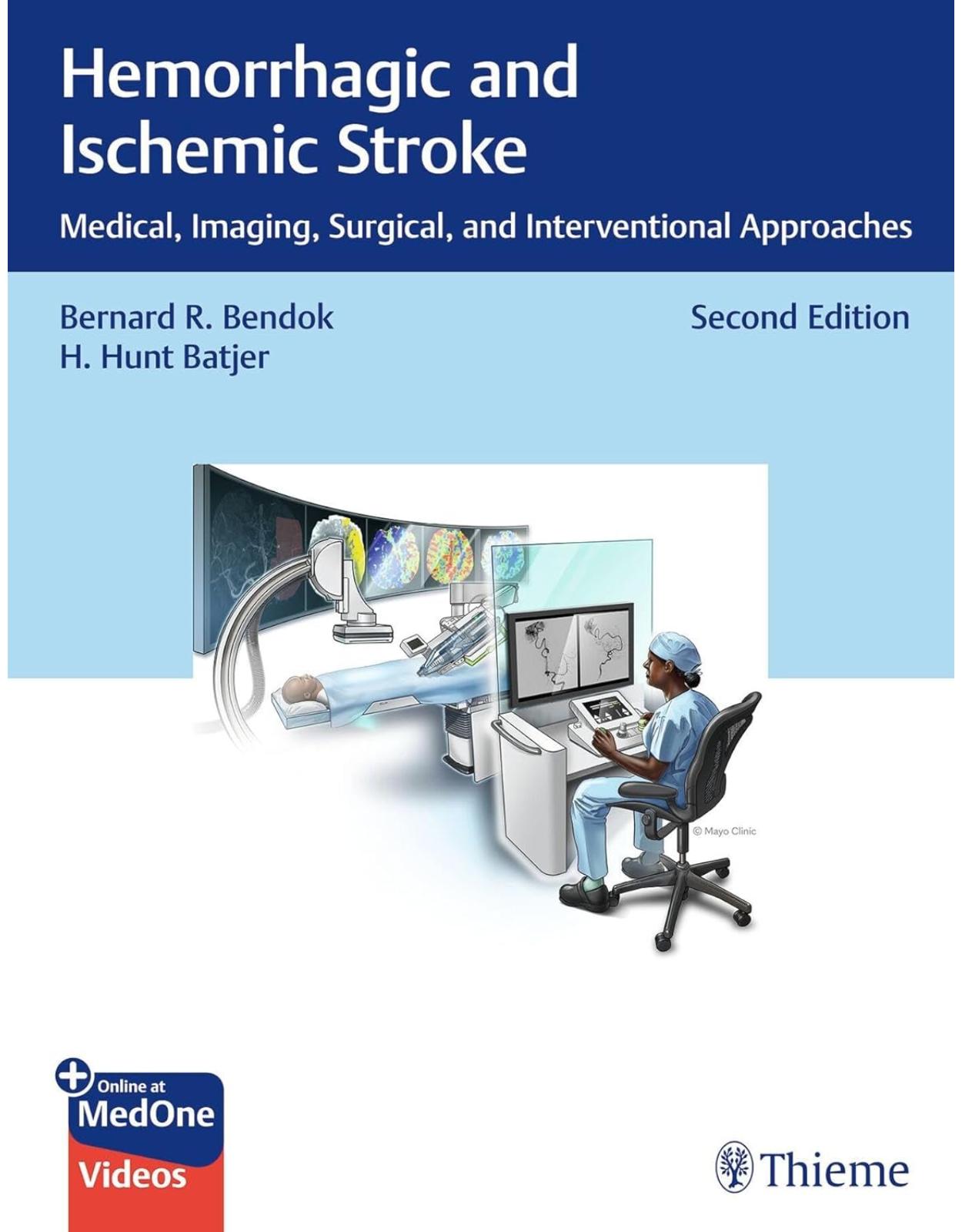
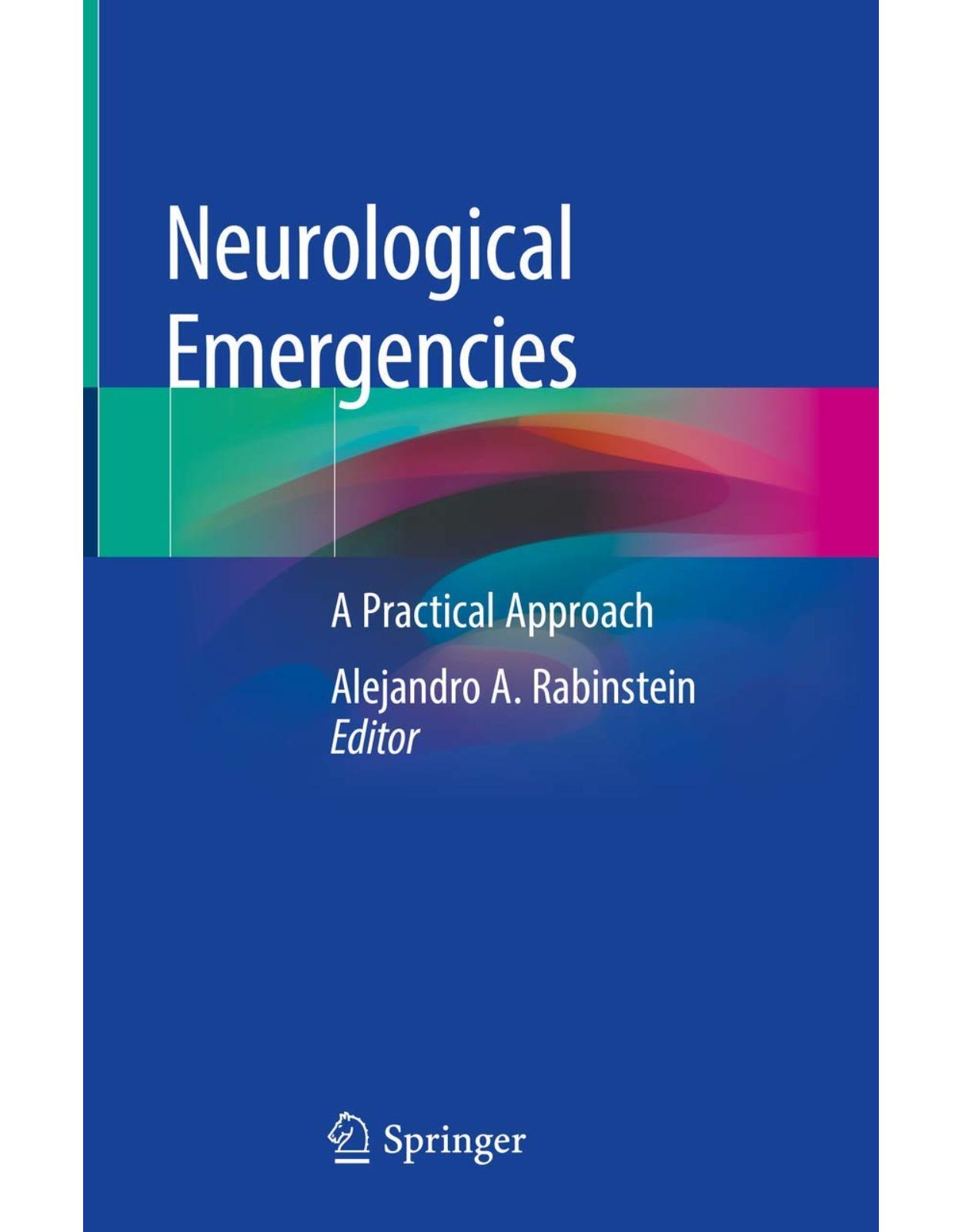
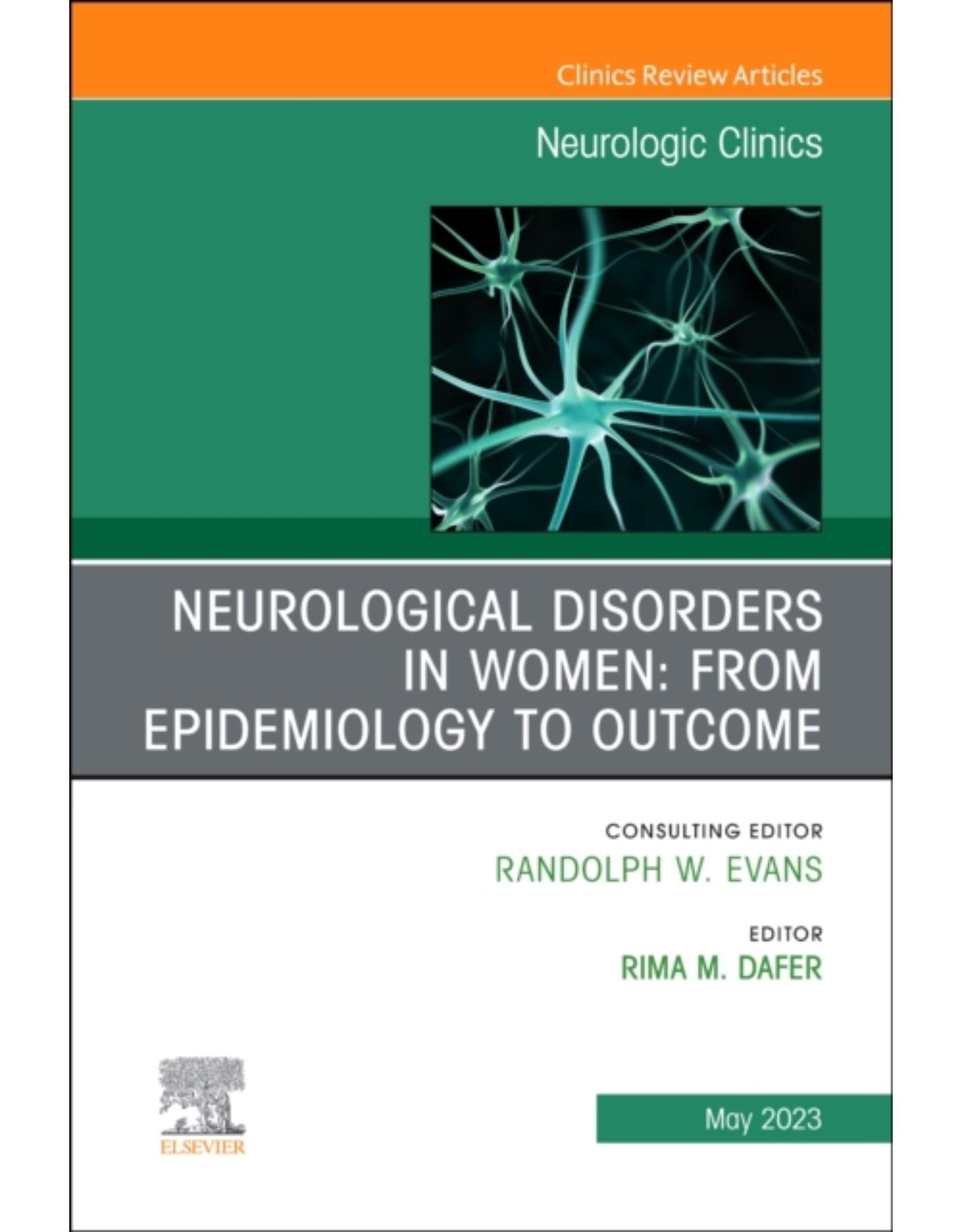
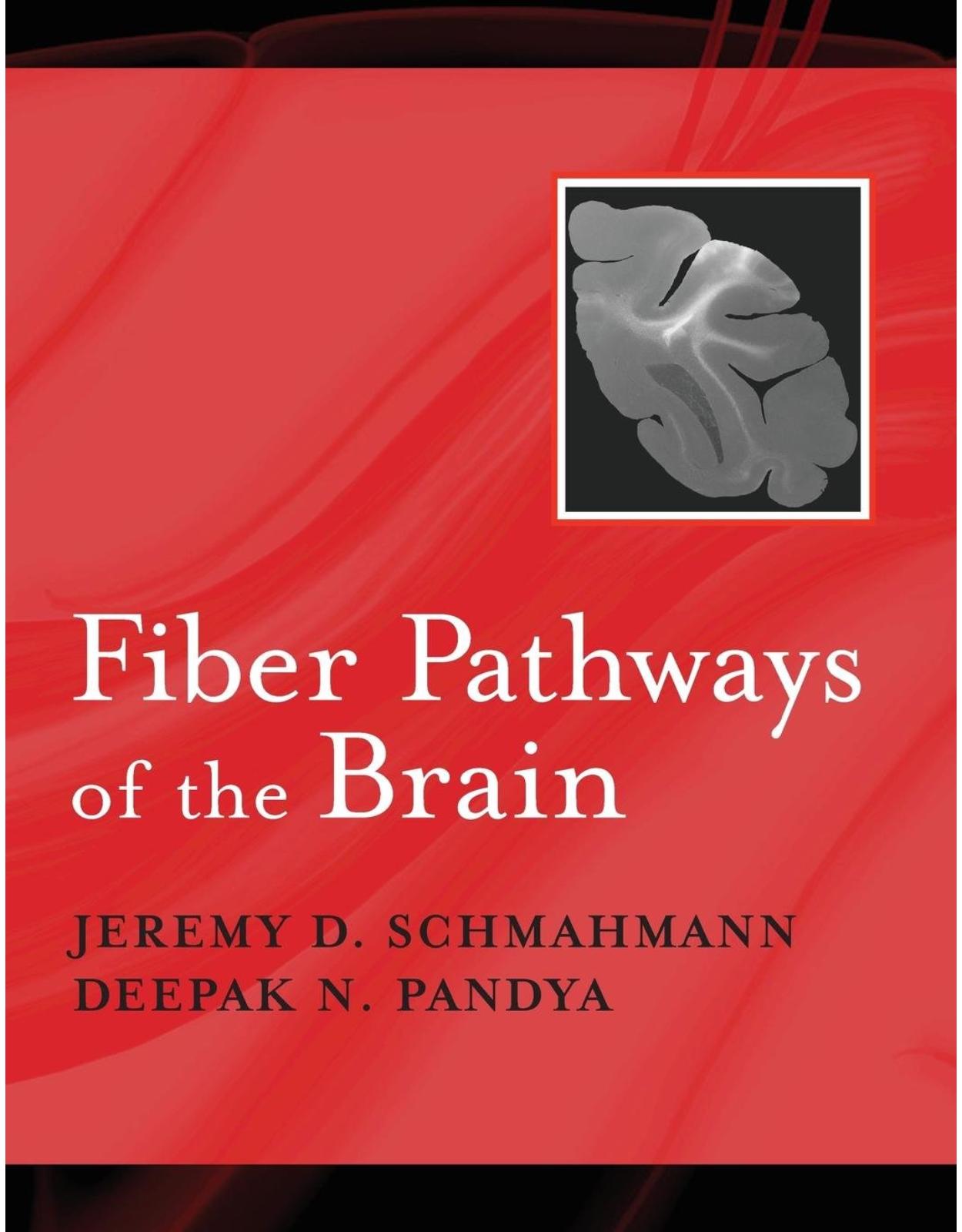
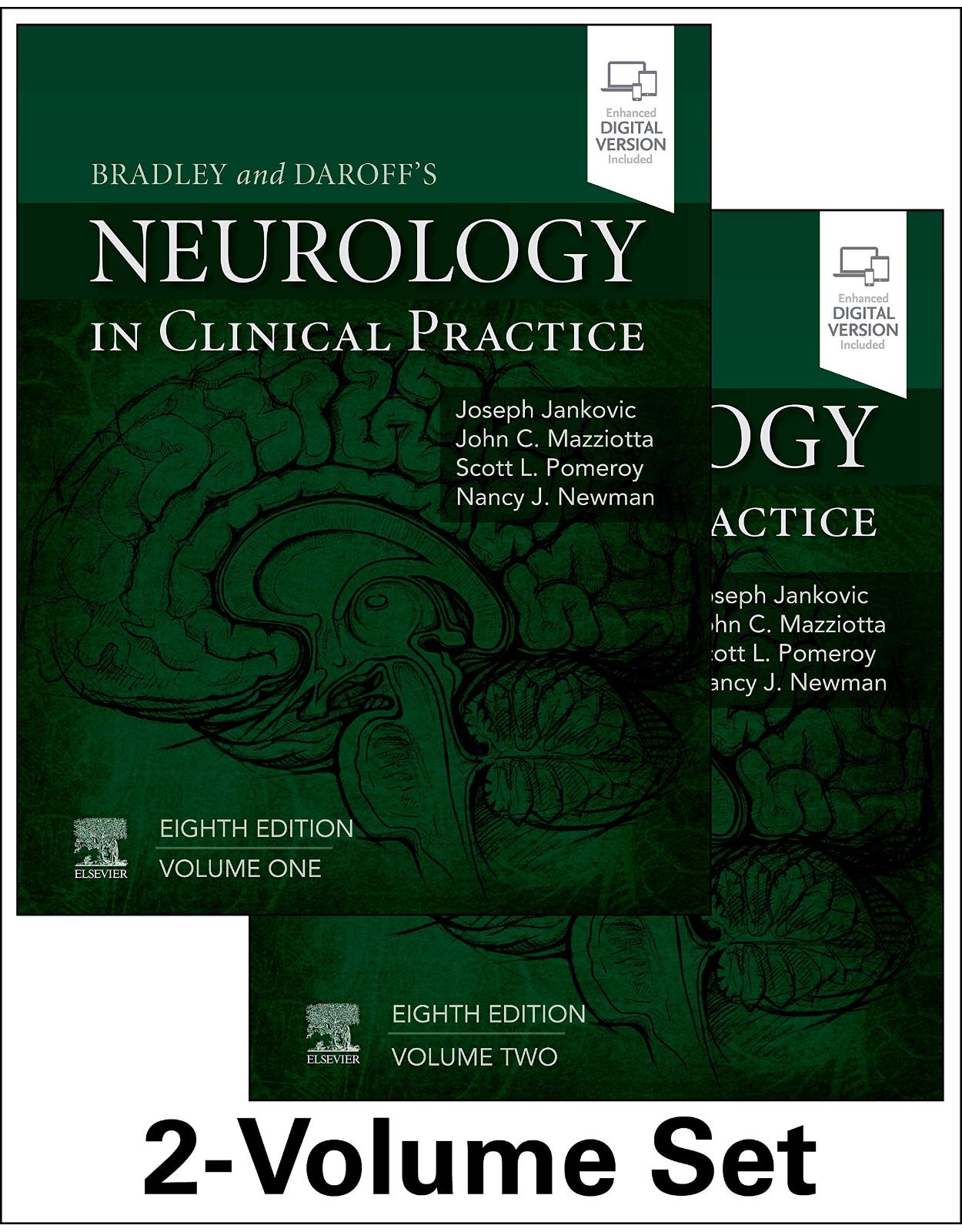
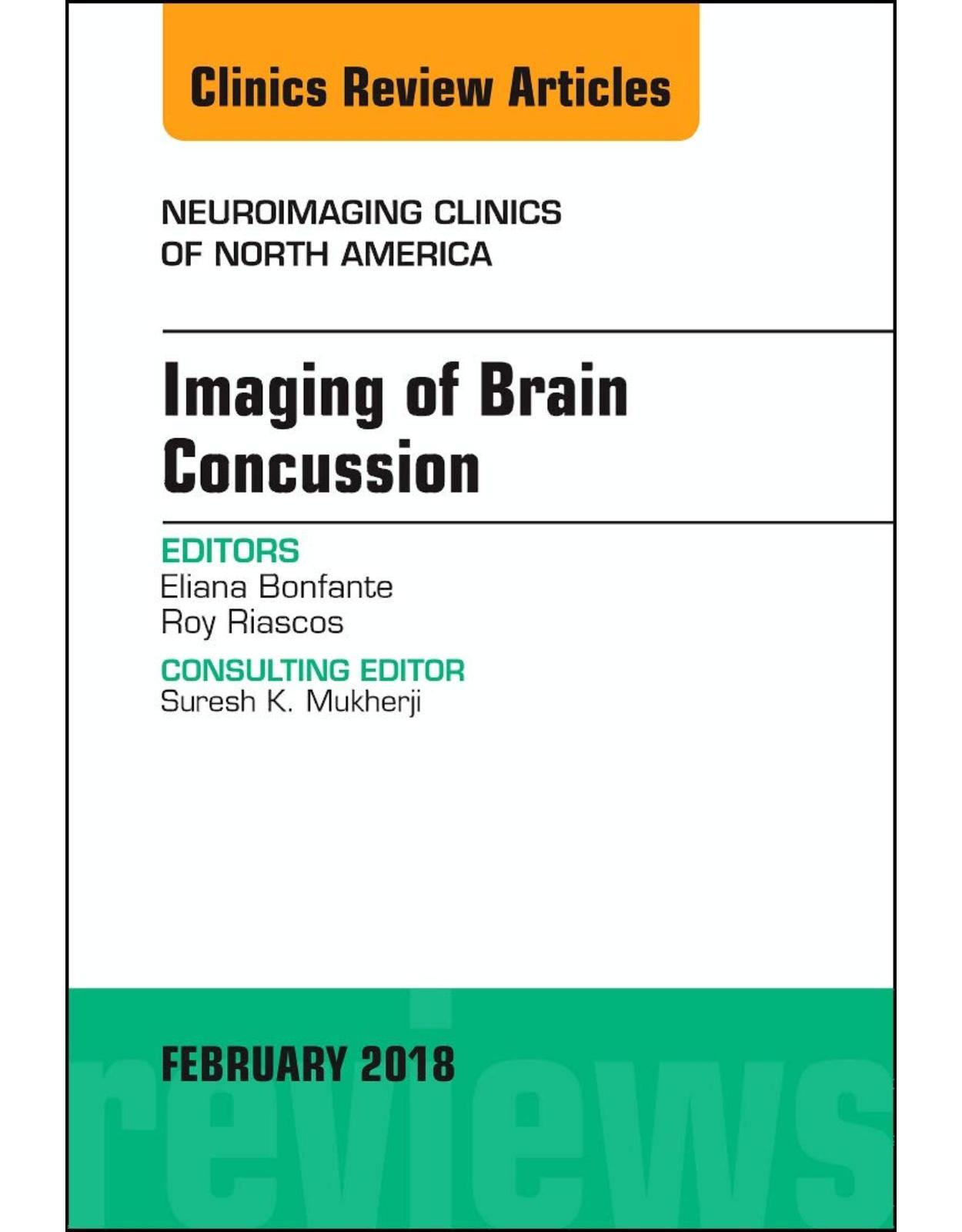
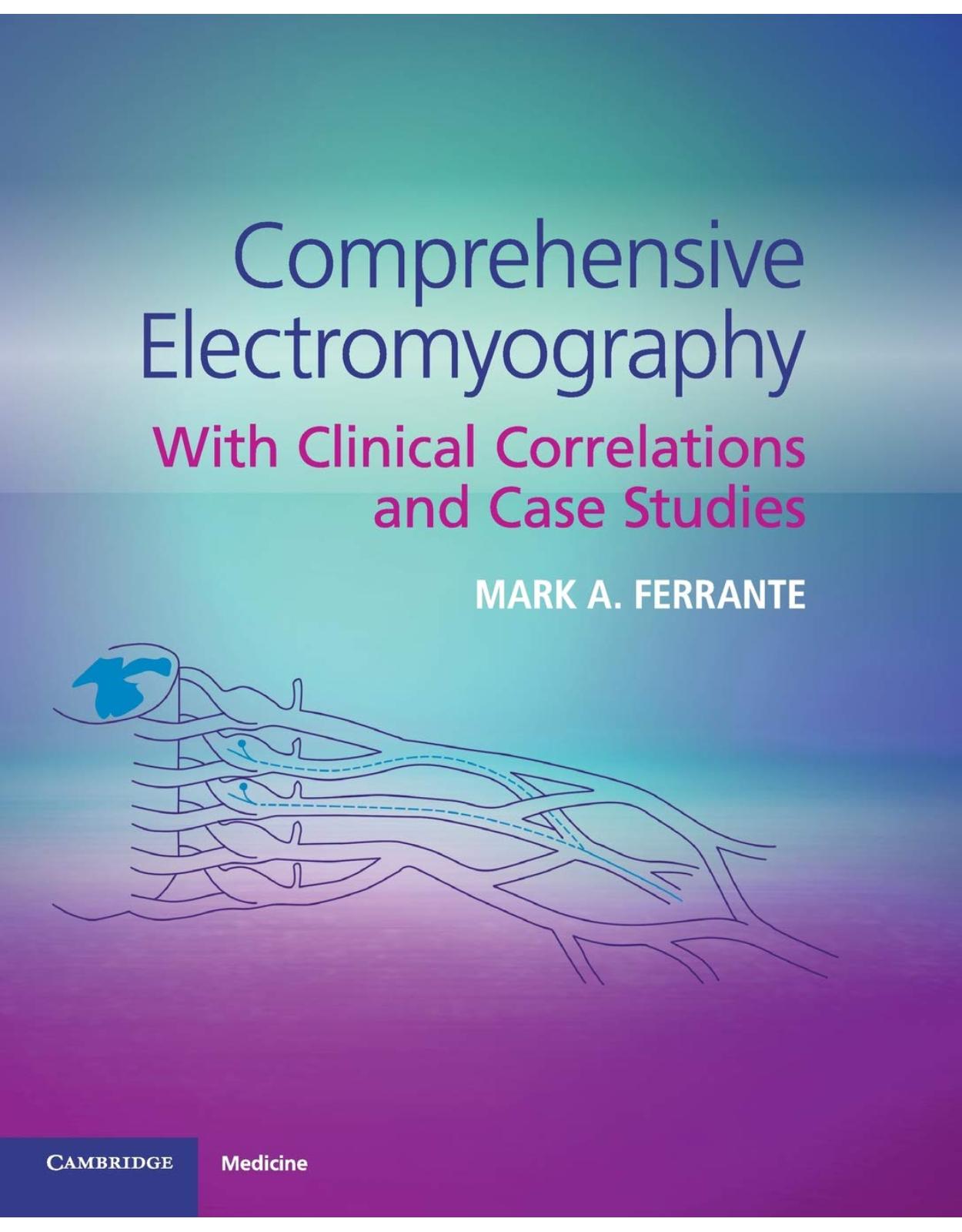

Clientii ebookshop.ro nu au adaugat inca opinii pentru acest produs. Fii primul care adauga o parere, folosind formularul de mai jos.